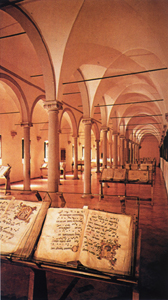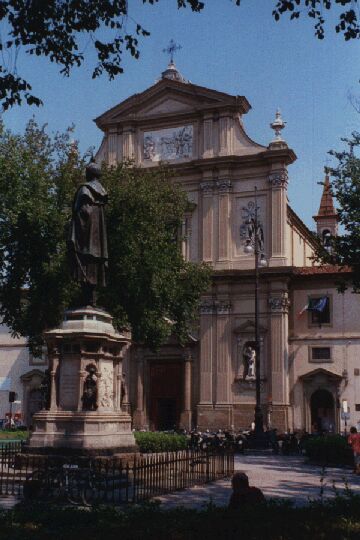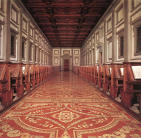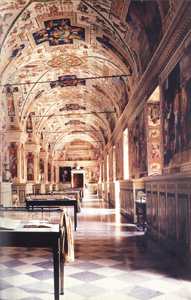
| The present day Biblioteca Medicea Laurenziana est. 1808 (shown below) has a long and complicated history tracing back to Cosimo Medici's commissioning of Michelozzo to build a long room in 1437 near the Dominican monastery at San Marco's.
The collection consisted of books that Cosimo acquired at the death of his friend Niccolo Niccoli, who had wanted his collection made available to the public. Hibbert actually states that of the 800 volumes, Cosimo only gave the monastery the religious books while keeping the others for his private collection. Yet another scholarly bibliographic account of the Niccoli collection by Ullman states Cosimo supplemented Niccoli's collection with religious books that complemented
the original 400 volumes. Already supplied with many Latin and Greek volumes, Cosimo's acquired books of the church fathers - Augustine, Thomas Aquinas, Ambrose, Jerome, Origen, etc. Furthermore, according to Ullman Cosimo even donated a few books from his own private collection, which at his death only numbered 150 volumes. Though it is unclear whether Cosimo was contributing more to his private collection or the one at San Marco, what isn't questioned is Cosimo's generosity in adding volumes to what became the
Biblioteca Medicea Laurenziana. |









